An academic research paper with the title ‘SIMULATING DIFFERENT LEVELS OF CAR CLASS UPGRADES IN A CAR RENTAL COMPANY’S OPERATIONS’ has been published for this case study at Winter Simulation Conference 2018 by Abdullah AlAbdulkarim. The results of the analysis can be found in the research paper. This product includes only the simulation model.
Model Capabilities
This model analyzes the pricing strategies and car class upgrade decisions in a complex car rental system to maximize profit. The simulation model embodies a ‘reservation system’ which incorporates the logic of entities requiring a resource in the future time of simulation time.
The model is built with Extendsim 9.3 AT full version (commercial license) and it is compatible with Extendsim 9.3 LT version as well as the model size is less than 75 blocks.
The car rental simulation model built in Extendsim incorporates vast flexibility and can be fitted to a car rental system of any size. The model has no limitation on the number of locations and car classes (categories) in the system. The model has a simple interface where users can copy and paste car rental data from excel in the model. The model can work in 3 different modes:
- Read car rental data from excel and generate demand accordingly
- Create car rental data based on random distributions for
- Customer arrival time,
- Rental duration (drop-off time)
- Difference of time between reservation and rental start, (Customer Type: walk-in or reservation)
- Percentage of customers requesting each car category
- Pick-up location preference percentage
- Drop-off location preference percentage
- Read car rental data inputted from excel and generate random additional car rental data.
The simulation model also makes it is to possible to decide on the number of upgrades to be offered to customers if the car class they asked for is not available at the pick-up time. The number of upgrades to be offered to the customers can be inputted by clicking the upgrades button at the main user interface.
The user can also decide on the precision on the calculated mean values of the turnover. The simulation model runs replications until relative error for the calculated mean of the turnover is less than the value inputted by the user.
Case Description
There are two types of customers who wish to rent a car; walk-in and reservation customers. Walk-in customers arrive to a car rental location where they ask for the availability for car category they wish the rent, for the duration they desire and to be dropped off at their desired destination. Walk-in customers ask for the immediate rental of car they wish to rent for. The reservation customers, however, make a reservation for the car class they wish to rent for the rental starting date in the near future and duration they desire, and they pay or secure the amount to the car rental company at the time of reservation.
All demand (walk-in and reservation customers) arriving to the car rental office or reservation system, has the following information:
- The class of car the customer is willing to rent
- The duration of car rental (in days)
- The maximum amount a customer willing to pay per day for renting their desired car class
- The location for the start of the rental
- The location for the end of the rental
The walk-in customers are not aware of the availability of the cars and its price before arriving to the car rental office. They make decisions based on the response they get regarding the availability and the price of the cars. Reservation customers entering the reservation system act in a similar fashion regarding the price and availability of the cars. If they find a car available within their budget and for time and duration they require, they fill in the online form to complete the reservation. In this case study the budget (maximum amount a customer is willing to pay) for a specific car class is determined by assigning exponential distribution for this value. This is because, exponential distribution is the best fitting distribution to represent the maximum amount a customer can pay for any product or service. This feature of the simulation model adds real-life complexity to the system where the demand for any car class is dependent upon the price of that car class.
The customers arriving to car rental system already know the car class they want to rent for which can be determined either in the inputted demand data or by percentage values for each car class in the random demand generation mode. In this case study simulation runs with the inputted demand data where all car classes have uniform demand. The initial number of cars available at each location for each car class is set to 5. However, by changing the price for any of the car classes the demand for that car class will also change which will affect the availability of the car class. Further, by enabling upgrades to customers the demand for next (higher) car class will also be affected. The rental fee (turnover) is calculated by the following formula: the number of rental days * price for the asked car category. In this case study, the effect of different pricing strategies will be investigated. Further, the effect of offering upgrades on the turnover will also be analyzed and commented upon.
User Reviews
Be the first to review “Car Rental System Model of Research Paper”
You must be logged in to post a review.
General Inquiries
There are no inquiries yet.

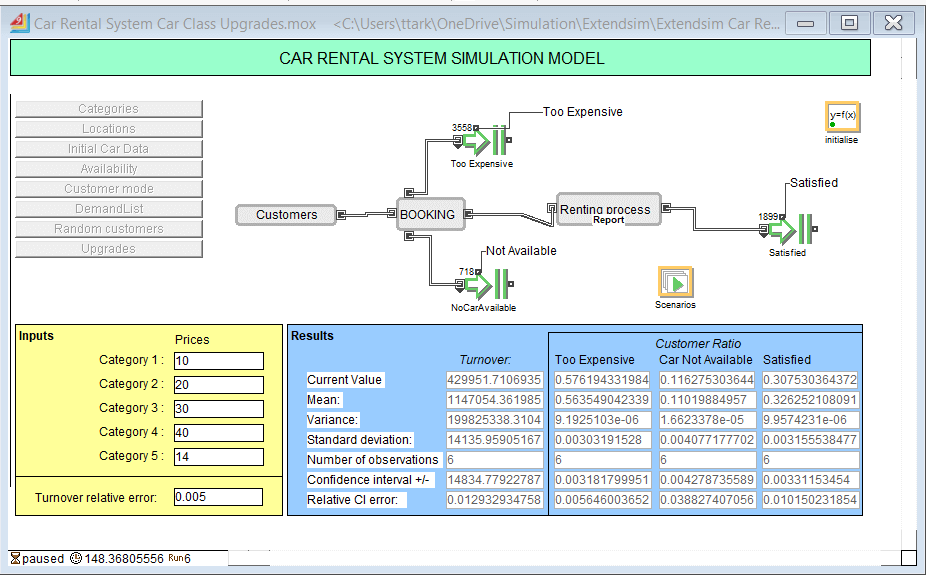
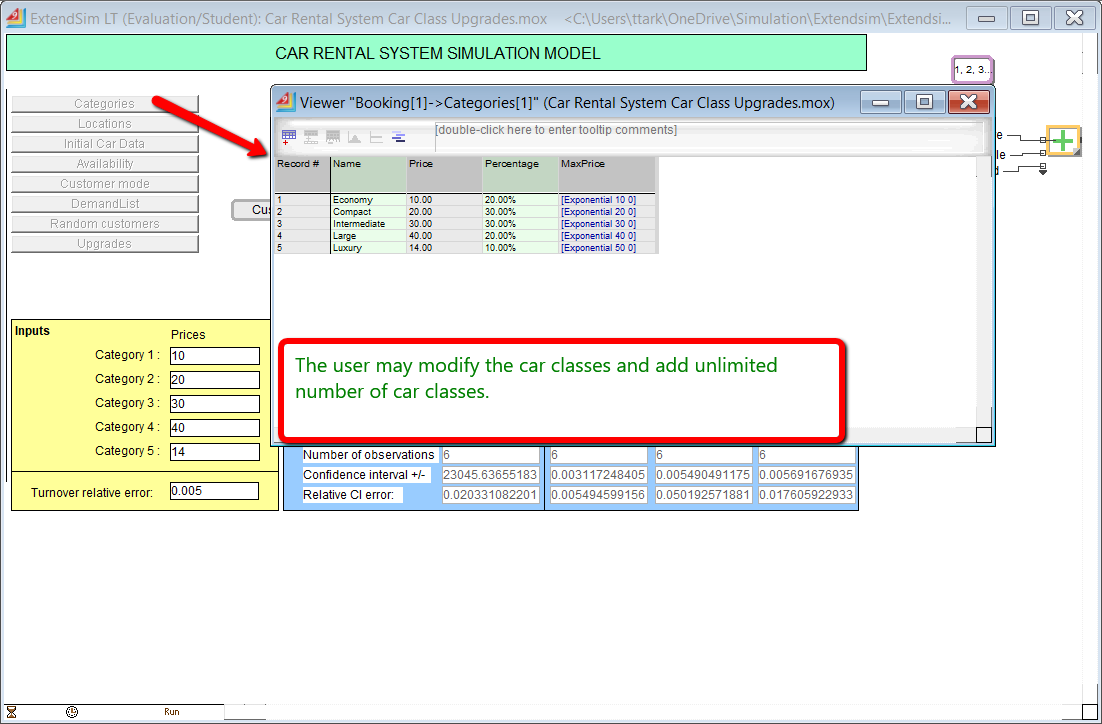


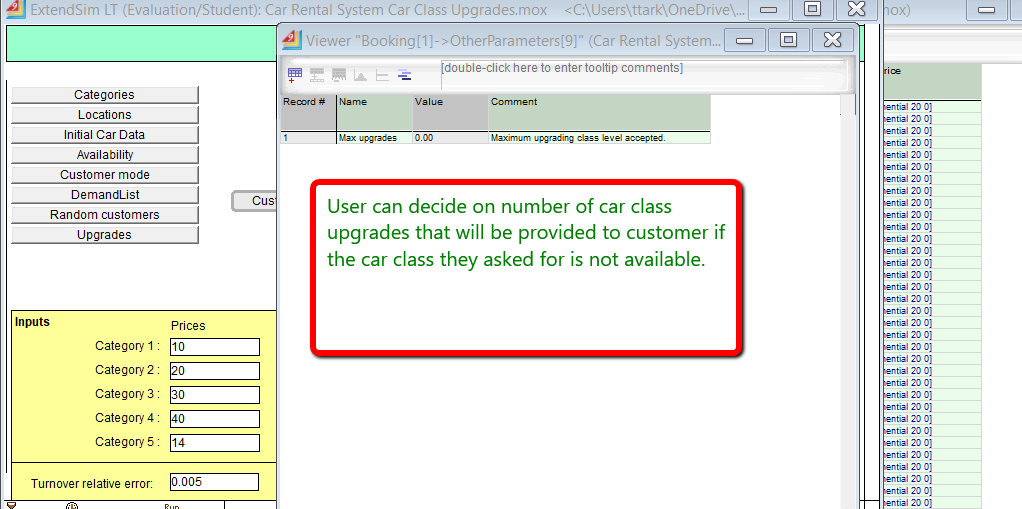
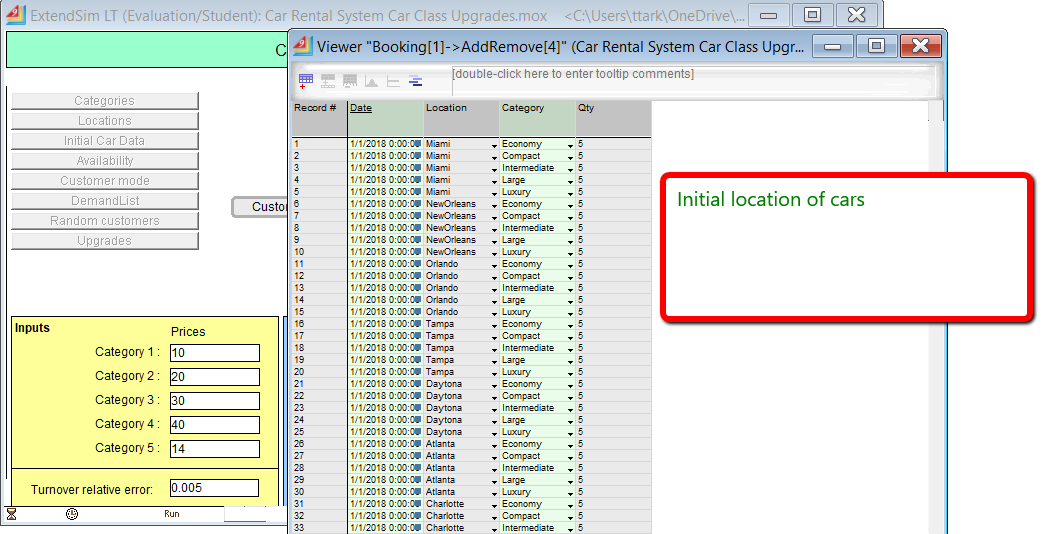
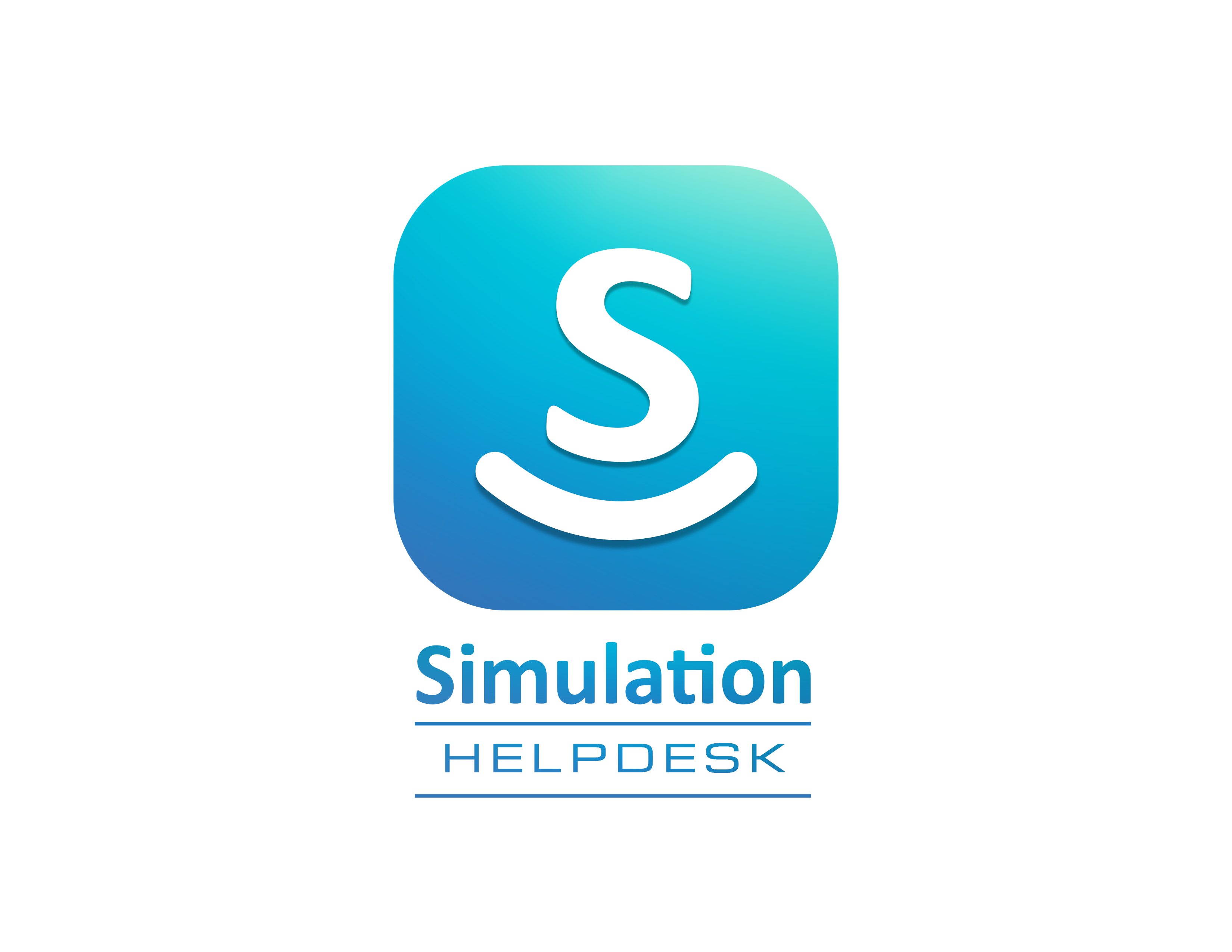

There are no reviews yet.